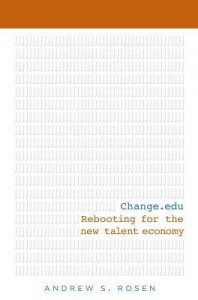Kids and Covid: Schools can reopen safely now
I've been as hesitant as anyone else to send children back to school. It seemed like a recipe for disaster—pulling together children from across the community, putting them together all day to spread sickness around, and then sending them back home to infect their families. But the research shows that school can be very safe. We should reopen schools and let every family send their children.
Kids and Covid: Schools can reopen safely now
Benjamin P. Linas, writing at Vox.
When Covid began to spread in the US last year, teachers were right to be worried about schools. We knew almost nothing about the virus’s spread. Operating schools under business-as-usual conditions very well could have led to more infections among teachers, students, and people in the community.
But since then, we have accumulated a massive amount of data about how to keep schools open safely.
First, last spring, we observed the experiences of other countries like Scotland, Singapore, and France, where schools reopened and masks and social distancing seemed to prevent large-scale transmission.
In the US, epidemiologists compared the timing of school closures to changes in Covid incidence. Some studies found that school closures might have reduced the spread of illness, but the findings are complicated because we were also making other major public health changes at the same time. And overall they failed to find a strong link.
Data and patterns also began to emerge about children’s Covid-19 test results and their exposures. Playdates with friends emerged as the common exposure among the infected; time in school did not.
Still, as reassuring as the data were, they were all indirect. The gold standard to learn if schools can open safely is fairly simple: Open schools, measure Covid incidence, and see what happens. Many US school districts have now done this, and we have the data.
First, researchers in North Carolina published results from 11 school districts and over 100,000 students and staff. Schools in those districts employed mandatory masking and six-foot distancing where feasible, but no major capital improvement to HVAC systems or buildings. In the first quarter of this school year, they found the rate of transmission of Covid in schools was dramatically lower (roughly 1/25) than the level of transmission in the community. Among all of the Covid-19 infections observed in school, the state health department’s tracers found 96 percent were acquired in the community, and there were no documented cases of the virus passing from child to adult in schools — zero.
Second, a similar study followed 17 schools in Wisconsin. Like North Carolina, those schools required masks indoors, three-foot distancing with effort to distance farther whenever feasible, and no major capital improvements. Between August 31 and November 29, with over 4,500 students and 650 staff, they found seven cases of Covid transmission to children and also found no cases of Covid transmission to educators in the buildings. Further, these schools eliminated Covid transmission at the same time that the surrounding community saw a rapid rise in Covid-19 cases.
A third important preprint study analyzes data from two schools in Atlanta. This study is small, but it is important because the schools were conducting routine asymptomatic screening of students, teachers, and staff. In Atlanta, 72 percent of the limited number of transmission events in one school were known to be the result of non-compliance with masking. And again here, there were no cases transmitted from students to teachers.
Sadly, at the same time that we are learning definitively that we can open schools safely and essentially prevent Covid transmission, data are emerging about the real damage being done to children by prolonged remote learning, including a rise in the use of pediatric emergency rooms for psychiatric illnesses, increasing anxiety and depression symptoms, losses in learning progress, and large racial disparities in both the availability of in-person instruction, and educational achievement.
…
At the same time, teachers also need to recognize that full vaccination is not a prerequisite for safe schools, as some educator unions have called for. We did not have a vaccine in North Carolina or Wisconsin when they safely opened schools in August 2020.
We must also not let other demands, such as universal asymptomatic testing or large-scale capital improvements to buildings, stymie the return to in-person learning. Yes, we should be working to implement more screening in schools and improving air exchange, but we can do that in parallel with re-opening. We know now from good data that we can effectively stop Covid-19 at the school doors and get American education back on track without these things. Essentially, all we need to safely reopen schools are mask mandates, reasonable distancing of at least three feet, minor and affordable upgrades to existing HVAC systems, and teachers.
…
A realistic plan for reopening schools is to immediately begin bringing the youngest learners back to full-time, in-person learning with strict guidance for masking indoors, three-foot minimal distancing with effort to maximize distance as much as possible. Districts can certainly conduct air-exchange surveys in classrooms as an extra precautionary measure and use simple and affordable mitigation strategies for suboptimal conditions, such as upgrading HVAC filters, opening windows, and deploying portable HEPA filters in problem spaces.
Kids and Covid: Schools can reopen safely now
This entry was tagged. COVID-19 Education Policy Unions
